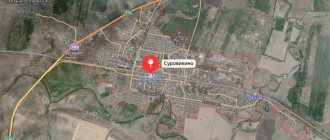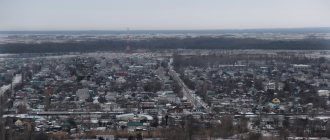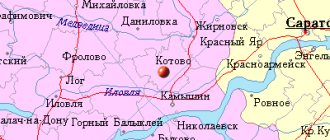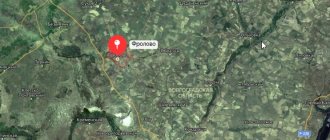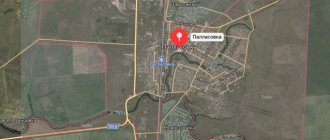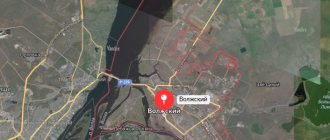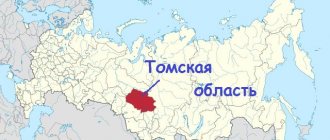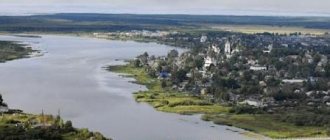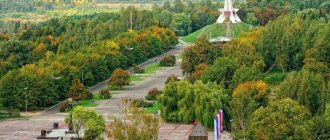Serafimovich, Volgograd region. History and modernity. Interesting Facts.
There are not many real oases of Don Cossack culture left in our country, and one of them is the city of Serafimovich, Volgograd region.
The local population sacredly preserves the military traditions of their ancestors, who defended the fatherland for centuries. In the city itself, little has changed since those times - there are many brick houses with one or two floors, which are more than a hundred years old. The architecture of the Cossack village has been carefully preserved, and the townspeople themselves do not forget about the customs and morals of the Cossacks. The area is included in the country's cultural heritage list.
Serafimovichsky district is a territorial unit with an administrative center in the city of the same name. It includes 15 municipalities, with 14 rural settlements and one urban. The total number of settlements in the region is 73.
Links[edit]
Resurrection Church in Serafimovichi
Notes[edit]
- ^ abcde State Committee of the Russian Federation on Statistics. Committee of the Russian Federation for Standardization, Metrology and Certification. No. OK 019-95 January 1, 1997 “All-Russian classifier of objects of administrative-territorial division. Code 18 250", ed. changes No. 278 / 2015 dated January 1, 2016. (Goskomstat of the Russian Federation. Committee of the Russian Federation for Standardization, Metrology and Certification. No. OK 019-95 January 1, 1997. Russian classification of administrative divisions) (OKATO).
Code 18 250 , as amended by Amendment No. 278/2015 of 01/01/2016). - ^ abc State Committee of the Russian Federation on Statistics. Committee of the Russian Federation for Standardization, Metrology and Certification. No. OK 019-95 January 1, 1997 “All-Russian classifier of objects of administrative-territorial division. Code 18 250 501", as amended. changes No. 278 / 2015 dated January 1, 2016. (Goskomstat of the Russian Federation. Committee of the Russian Federation for Standardization, Metrology and Certification. No. OK 019-95 January 1, 1997. Russian classification of administrative divisions) (OKATO).
Code 18 250 501 , as amended by Amendment No. 278/2015 of January 1, 2016). - ^ a b Federal State Statistics Service (2011). All-Russian Population Census 2010. Volume 1 [All-Russian Population Census 2010, vol. 1]. All-Russian Population Census 2010 [All-Russian Population Census 2010] (in Russian). Federal State Statistics Service.
- "26. The size of the permanent population of the Russian Federation by municipalities as of January 1, 2022". Federal State Statistics Service. Retrieved January 23, 2022.
- ^ abcde Law No. 979-OD
- "On the Calculation of Time". Official Internet portal of legal information
. June 3, 2011. Retrieved January 19, 2022. - Post office. Information and computing center of OASU RPO. ( Post office
).
Search for postal service objects ( postal Search for objects
) (in Russian) - ↑
Federal State Statistics Service of Russia (May 21, 2004). The population of the Russian Federation, cities of the Russian Federation as part of federal districts, urban settlements, settlements, settlements, settlements is 3 thousand or more people. [Population of Russia, its federal districts , subjects of the Federation, districts, urban settlements, rural settlements - administrative centers and rural settlements with a population of more than 3000 people] (XLS). All-Russian Population Census of 2002 [All-Russian Population Census of 2002] (in Russian). - All-Union Population Census of 1989 Population of Union and Autonomous Republics, Autonomous Regions and Districts, Territories, Regions, Urban Settlements and Village District Centers [All-Union Population Census of 1989: Current Population of Union and Autonomous Republics, Autonomous Regions and Districts, Territories, Regions , districts, urban settlements and villages performing the functions of district administrative centers]. All-Union Population Census of 1989 [All-Union Population Census of 1989] (in Russian). Institute of Demography of the National Research University: Higher School of Economics [Institute of Demography of the National Research University: Higher School of Economics]. 1989 - via Demoscope Weekly
.
Location
This small town covers an area of only 30.6 square meters. km. Its location is on the banks of the Don, in the northwestern part of the region, 260 km from Volgograd. From different sides, the Serafimovichsky district is surrounded by other regional districts, and only in the west it borders on the Rostov region. Since the area stretches along both banks of the Don, the Don ridge is located on the right bank, and the Archedinsko-Don sands are located on the left.
The local land is rich in natural reserves - there are gas and peat deposits, sources of underground fresh water, deposits of construction sand and raw materials for the production of ceramic bricks and expanded clay.
Serafimovich has transport connections with many settlements in the region and large cities - buses depart from here to Volgograd and Moscow, Surovikino, Mikhailovka, Frolovo, Log, etc. One of the most beautiful places on the high Don bank is occupied by the “Serafimovich pearl” - Ust-Medveditsky Spaso- Transfiguration Monastery.
Cuisine and restaurants
In any city, even the smallest one, tourists will not be left without food. The only question is where to buy it. And the second question is where you can eat in a pleasant, calm environment. In this regard, Serafimovich is a typical Russian town, in which you can count at most 3-4 good establishments. Well, what more?
These are ordinary cafes with a varied but familiar cuisine to every tourist, where you can find everything from scrambled eggs to pasta, from fried meat to pancakes with sour cream. Separately, it is worth noting the fish dishes - fishing is well developed in Serafimovich, so you need to try the local delicacies.
Ust-Medveditsky Natural Park
Population
Since 1939, the population of the area has been more than 20 thousand people. It reached its maximum in the 70s, crossing the threshold of 30 thousand people. Then it decreased slightly, but overall remained stable. At the moment it has about 23 thousand inhabitants. Of 1,117 Russian cities, Serafimovich ranks 969th in terms of population. About 38% of the total population of the district live directly in the district center. More than 90% of them are Russians, partly the national composition is represented by Ukrainians and Uzbeks.
Story
The history of the region is closely connected with the Don Cossacks. About 400 years ago, a station was formed on the left bank of the Don. Ust-Medveditskaya. There were picturesque meadows for grazing cattle, and there was also a lot of fish. During the summer, cattle were driven to the right bank, and special bases were even built there. This name still remains to designate the lower part of the city.
In 1802, Ust-Medveditskaya received the status of a village in the district of the Don Army. Fairs were held here in summer and winter, where literally everything was sold. Agriculture developed intensively. Wealthy Cossacks were among the first Russians to use technological innovations - seeders, mowers, and so on.
In the prosperous village there were several small brick factories, a convent, parochial schools, a women's Mariinsky School, two gymnasiums - for men and women separately, four churches and schools for crafts and military purposes.
The Civil War passed almost unnoticed in these places. Soviet power was established peacefully, without bloodshed, at the end of 1917. In the fall of 1918, the Ust-Medveditsky district was captured by Ataman Krasnov, a year later his troops were defeated, but within a year the bandits hiding in the steppes had to be eliminated.
In 1921, the district began to belong to the Tsaritsyn province. The government changed - the laws changed, and the Cossacks were recognized on an equal basis with other peasants - natives and newcomers; they were no longer a privileged class. The emergence of Komsomol cells in settlements occurred in 1920.
In 1928, the Ust-Medveditsky district was formed, which included several villages and adjacent farmsteads - a total of 41 village councils. In 1929, the first collective farms began to be organized, and in 1930 they were already in every locality. Technical stations appeared, and the professions of tractor driver, agronomist, and mechanic became popular. Thanks to technology, by the end of the 30s, many successes had been achieved in the economy; the sown area, compared to 1913, increased by 1.5 times, and the yield doubled. Gardening also developed; in 1934, a nursery was founded; pears, cherries, apple trees, and grapes were grown here.
In 1921, a professional intern club opened, there were already many Komsomol clubs in the village, and reading huts were popularized. The transformations, to a large extent, were associated with A.S. Serafimovich. The writer's real name is Popov. He lived in St. Ust-Medveditskaya from 1874 to 1883, while he was a high school student, and then from 1890 to 1892, when he returned from exile to the city of Mezen, Arkhangelsk region. Since 1933 A.S. Serafimovich often came here and stayed for a long time; a memorial museum is now located in his house.
The renaming of the village to Serafimovich in 1933 was timed to coincide with his 70th anniversary. The writer took care of the improvement of the city. There were three schools, an orphanage, a library, and children's art centers here.
A cultural center was opened in the area, streets were landscaped, parks were planted, some streets were covered with cobblestones, Oktyabrskaya Street was filled with asphalt.
With the arrival of the Germans in these parts, life became completely different. The male population went to the front. In August 1942, the Nazis occupied Serafimovich, but stayed here for several weeks, and then this important bridgehead was liberated at the cost of thousands of lives of Soviet soldiers. And from here, on November 19, the legendary Stalingrad offensive began. Since those times, the Chepelev Kurgan has remained “202 high,” where a 4-sided pyramid now stands as a monument. Eight natives of these places received the title of Hero of the Soviet Union.
After the war, Serafimovich had a hard time recovering, new gardens and parks were gradually laid out, a water supply system and a power plant began operating, and agricultural work was in full swing. Farms for breeding poultry and livestock were created, and by 1950 this industry was not only restored, but also improved the indicators of the pre-war level.
In 1984, the bridge across the river was inaugurated. Don. It became a reliable reinforced concrete structure. Cultural sites were opened in the city, many monuments to soldiers were erected. Now there are medical and educational institutions, trade, food and consumer services facilities here. Agriculture is considered the main economic sector.
Hotels Serafimovich
There are several decent hotels in Serafimovich where you can spend a couple of nights. They can be given a maximum of one and a half “stars”, because in terms of design and level of service they still remain in the Soviet Union.
Much more attractive are recreation centers located on the banks of the Don. The cost of living here starts from 1000 RUB per day. Prices depend on the equipment of the houses and the services offered by the owners of the base. Prices on the page are for April 2022.
Typically houses are designed for 2 or 4 people. There are showers, TV, refrigerator, split system. Near the houses there are summer terraces and areas where you can barbecue. For entertainment, the base offers paintball, tennis, horseback riding and kayaking.
Weather
The climate of Serafimovich is moderate, the winter here is quite long and moderately cold. In summer the weather is very warm, but this period does not last long here. But in warm weather, Volgograd residents and guests from other cities like to relax here.
Therefore, recreation centers were built. Guests enjoy horseback riding and kayaking trips. Fishing deserves special attention - its lovers come here literally all year round, because the bite here is simply excellent.
Job
There are only a few job offers in Serafimovich. Almost all of them relate to the trade sector. You can also find vacancies for work on a rotational basis. For example, according to advertisement No. 1997786062 in Sochi, an employee with a private security guard certificate is required to work as a security guard.
The work schedule is variable with the ability to choose, food and accommodation are provided free of charge, responsibilities include maintaining the customer’s property and access control. Salary – 46 thousand per month + bonus.
